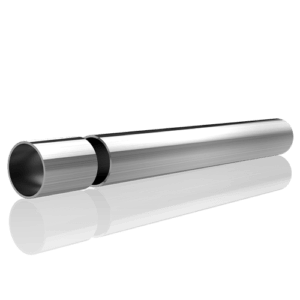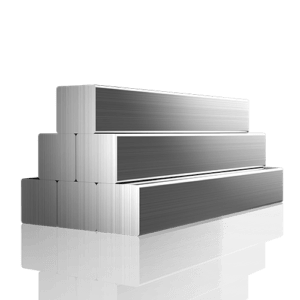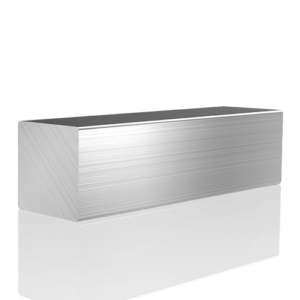Welcome to My Blog!
Before we dive into the content, I’d love for you to join me on my social media platforms where I share more insights, engage with the community, and post updates. Here’s how you can connect with me:
Facebook:https://www.facebook.com/profile.php?id=100090063158454
Now, let’s get started on our journey together. I hope you find the content here insightful, engaging, and valuable.
Table of Contents
Introduction

When it comes to selecting the right material for your projects, especially in industries that require durable and corrosion-resistant materials, the debate between “Stainless Steel 201 vs 304” often arises. Both are popular variants of stainless steel with their unique properties and applications, but how do you decide which one is best for your needs? In this blog post, we’ll take an in-depth look at the key differences between stainless steel 201 and 304, helping you make an informed decision. From composition and durability to cost-effectiveness and applications, we’ll explore every aspect to give you a clearer understanding of both alloys.
What Different Makes from Stainless Steel 201 vs 304?
“Stainless Steel 201 vs 304” are both austenitic stainless steels, meaning they share certain properties, such as excellent corrosion resistance. However, there are significant differences between the two in terms of composition, cost, and performance. Understanding these differences can help you choose the right material for your needs.
Stainless steel 201 is a lower-cost alternative to 304. It is typically made with higher levels of manganese and nitrogen, which makes it more affordable but also affects its corrosion resistance. On the other hand, stainless steel 304 contains higher amounts of nickel and chromium, providing better resistance to corrosion and overall durability. These fundamental differences lead to distinct advantages and disadvantages for each material.
Composition: How Does the Material Makeup Affect Performance?

One of the biggest differences between “Stainless Steel 201 vs 304” lies in their chemical compositions. While both alloys are part of the 300 series of austenitic stainless steels, the specific amounts of elements like nickel, manganese, and chromium differ significantly.
- Stainless Steel 201 Composition: Typically made of 16-18% chromium, 3.5-5.5% nickel, and 5.5-7.5% manganese, stainless steel 201 offers a balance between cost and corrosion resistance. The higher levels of manganese allow for the replacement of some nickel, reducing the overall cost.
- Stainless Steel 304 Composition: Contains 18-20% chromium and 8-10.5% nickel. The high nickel content enhances its corrosion resistance and improves its ability to withstand extreme environments, such as acidic conditions or high temperatures.
Comparison Table: Chemical Composition
| Element | Stainless Steel 201 | Stainless Steel 304 |
|---|---|---|
| Chromium | 16-18% | 18-20% |
| Nickel | 3.5-5.5% | 8-10.5% |
| Manganese | 5.5-7.5% | <2% |
| Carbon | <0.15% | <0.08% |
| Iron | Balance | Balance |
Corrosion Resistance: Which Alloy Holds Up Better?
Corrosion resistance is a vital consideration in choosing between “Stainless Steel 201 vs 304”, particularly for industries where exposure to moisture, chemicals, or high temperatures is common. Stainless steel 304 excels in environments that demand long-lasting durability without rusting or corroding.
- Stainless Steel 201: While stainless steel 201 is relatively resistant to rust and corrosion, it performs less well compared to 304. The higher levels of manganese and lower nickel content make it more prone to corrosion in environments where exposure to harsh conditions is common, such as marine or food processing industries.
- Stainless Steel 304: Its high nickel content gives it superior resistance to rust and corrosion, especially in environments where there is a high chance of chemical or moisture exposure. This makes stainless steel 304 ideal for use in applications such as kitchen appliances, medical equipment, and food processing.
Cost and Affordability: Which Option is More Budget-Friendly?

Cost-effectiveness is often a deciding factor when selecting materials for projects. Stainless steel 201 is a cheaper alternative to stainless steel 304, which is one of the main reasons why it’s used in applications where budget constraints exist.
- Stainless Steel 201: The lower cost of stainless steel 201 comes from its lower nickel content and higher manganese levels. This makes it more affordable for large-scale projects where corrosion resistance isn’t the primary concern.
- Stainless Steel 304: The higher nickel content in stainless steel 304 increases its cost, but it offers a longer lifespan and better performance in challenging conditions. The cost difference is often justified by the added durability and reduced maintenance needs in the long run.
Applications: Where Are These Materials Used?
The specific properties of stainless steel 201 and 304 make them suitable for different applications. Choosing the right alloy based on its characteristics can optimize performance and reduce unnecessary costs.
- Stainless Steel 201: Due to its affordability, stainless steel 201 is used in less demanding environments. It’s commonly found in architectural applications, home appliances, kitchenware, and automotive parts. It is also used for manufacturing some types of sinks, cutlery, and shelving.
- Stainless Steel 304: Stainless steel 304 is commonly used in more demanding applications, such as in the food and beverage industry, medical devices, chemical processing, and in environments exposed to corrosive elements. Its superior corrosion resistance makes it the preferred choice for projects where durability is a top priority.
Durability and Longevity: Which Stainless Steel Will Last Longer?
While both “Stainless Steel 201 vs 304” are durable materials, their longevity can vary depending on the environment in which they are used. Stainless steel 304 offers better long-term performance, especially in harsh or outdoor environments.
- Stainless Steel 201: Due to its lower resistance to corrosion, stainless steel 201 may need to be replaced sooner in high-humidity or highly corrosive environments. However, for applications where exposure to these elements is minimal, it can perform well for many years.
- Stainless Steel 304: Stainless steel 304 is designed for longevity. It is highly resistant to wear and corrosion, and as such, is often the better choice for applications where long-term durability is required, despite its higher initial cost.
Conclusion

Choosing between “Stainless Steel 201 vs 304” ultimately comes down to your specific needs, budget, and performance requirements. If you are working with a tight budget and the environment isn’t highly corrosive, stainless steel 201 could be an ideal choice. However, if you require superior corrosion resistance, strength, and durability for more demanding applications, stainless steel 304 is the better investment.
Both materials have their place in the world of manufacturing and construction, and understanding the key differences between them will help you make an informed decision. Whether it’s the composition, cost, or long-term durability, knowing the unique benefits of each will ensure that your project is a success.
FAQ
Is stainless steel 201 more cost-effective than stainless steel 304?
Yes, stainless steel 201 is generally more affordable due to its lower nickel content. It is often used in applications where budget constraints are important.
Can stainless steel 201 be used in food processing?
While stainless steel 201 has good corrosion resistance, stainless steel 304 is the preferred choice for food processing applications due to its superior resistance to corrosion, particularly in environments with high moisture or acidic conditions.
Is stainless steel 304 suitable for marine environments?
Yes, stainless steel 304 performs well in marine environments, providing excellent resistance to saltwater corrosion. However, stainless steel 316, which contains molybdenum, would be even more suitable for highly corrosive marine environments.
Does stainless steel 201 last longer than stainless steel 304?
No, stainless steel 304 is more durable and resistant to corrosion, meaning it generally lasts longer, especially in harsh environments. Stainless steel 201 is more prone to corrosion and wear over time.
Which stainless steel is better for kitchen appliances?
Stainless steel 304 is the better option for kitchen appliances, as it offers greater resistance to corrosion, rust, and staining, making it ideal for use in food preparation areas.
